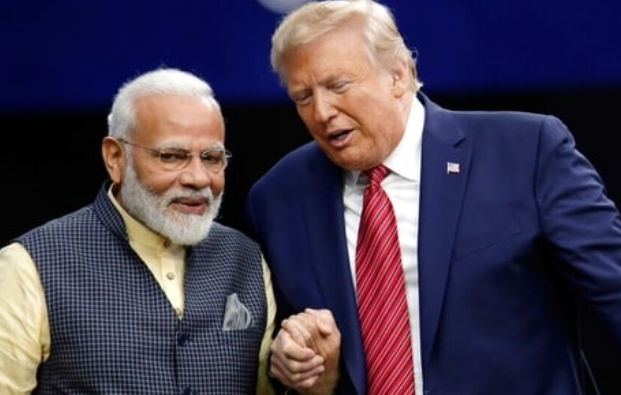
The trade relationship between India and the United States has taken another major hit, with US President Donald Trump signing official orders to impose an additional 25% tariff on Indian goods. This is on top of the existing 25% tariff that was already in place due to India’s continued oil purchases from Russia, effectively raising the total tariff rate to a steep 50%.
Trump’s move is not targeted at India alone. Brazil, Russia, China, and other nations have also found themselves in Washington’s crosshairs. Despite repeated warnings and tariff threats, none of these countries seem willing to bow to US pressure. However, the latest hike places India among the countries most affected by Trump’s aggressive trade measures.
While the oil trade with Russia is the publicly stated reason for this tariff escalation, analysts argue that the real issue runs much deeper—it is about the US dollar and its global dominance. Trump appears increasingly anxious about efforts by major economies to reduce their dependence on the dollar, a shift that could undermine America’s long-standing economic supremacy.
The fear is particularly focused on the BRICS group, which includes Brazil, Russia, India, China, and South Africa, along with newer members such as Iran, Egypt, Ethiopia, Indonesia, and the United Arab Emirates. Several of these nations have been actively working to settle trade in their local currencies instead of the US dollar. Russia and China have already taken significant steps to conduct transactions in their own currencies.
Trump’s concerns are not new. As far back as April, when he announced the imposition of reciprocal tariffs, he also threatened to impose an extra 10% tariff on BRICS nations. The reason is clear: BRICS collectively accounts for more than 35% of the world’s GDP. If these countries reduce the use of the dollar in global trade, it could have serious consequences for the United States.
The US dollar has been the dominant global reserve currency for the past eight decades. Central banks around the world hold large reserves of dollars for financial security, and nearly 90% of global foreign exchange transactions are conducted in dollars. Losing this position would be a strategic and economic blow to the US. Trump himself has acknowledged this risk, stating recently that losing the dollar’s reserve currency status would be akin to “losing a world war” and would fundamentally change America as a nation.
From Washington’s perspective, countries buying Russian oil are indirectly funding Moscow’s war effort in Ukraine. This has been the justification for a wave of tariffs and threats targeting Russia’s trade partners. Brazil already faces a 50% tariff, and China is engaged in a well-known trade war with the US. Now, India is firmly on Trump’s target list.
Despite this pressure, none of the targeted countries have shown signs of backing down. India, for its part, has made it clear that it will not compromise its national and economic interests to appease Washington. New Delhi’s position is that the safety and well-being of its citizens come before any foreign demands.
For now, the long-discussed India–US trade deal remains unresolved. Key questions linger: Will the 50% tariff be rolled back to 25%? Will there be any concessions from either side? Or will the trade standoff deepen? These answers will emerge in the months ahead.
What is clear at this stage is that the dispute goes beyond oil. At its core, this is a battle over the future of the US dollar’s global supremacy. Trump’s escalating rhetoric and trade actions suggest that Washington is prepared to confront any nation that challenges the dollar’s dominance. With BRICS moving toward currency diversification, this geopolitical and economic conflict is likely to intensify in the coming years.




